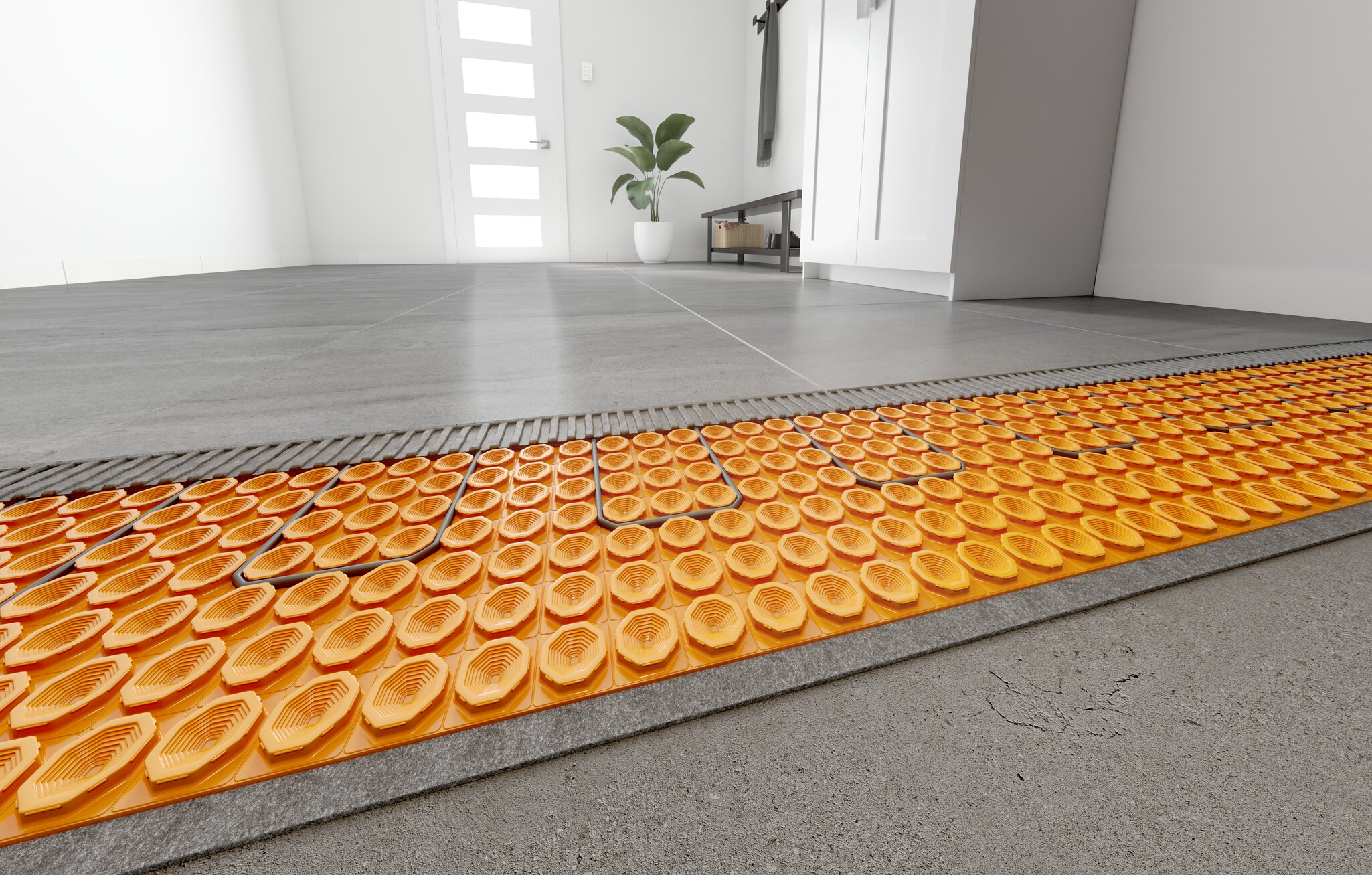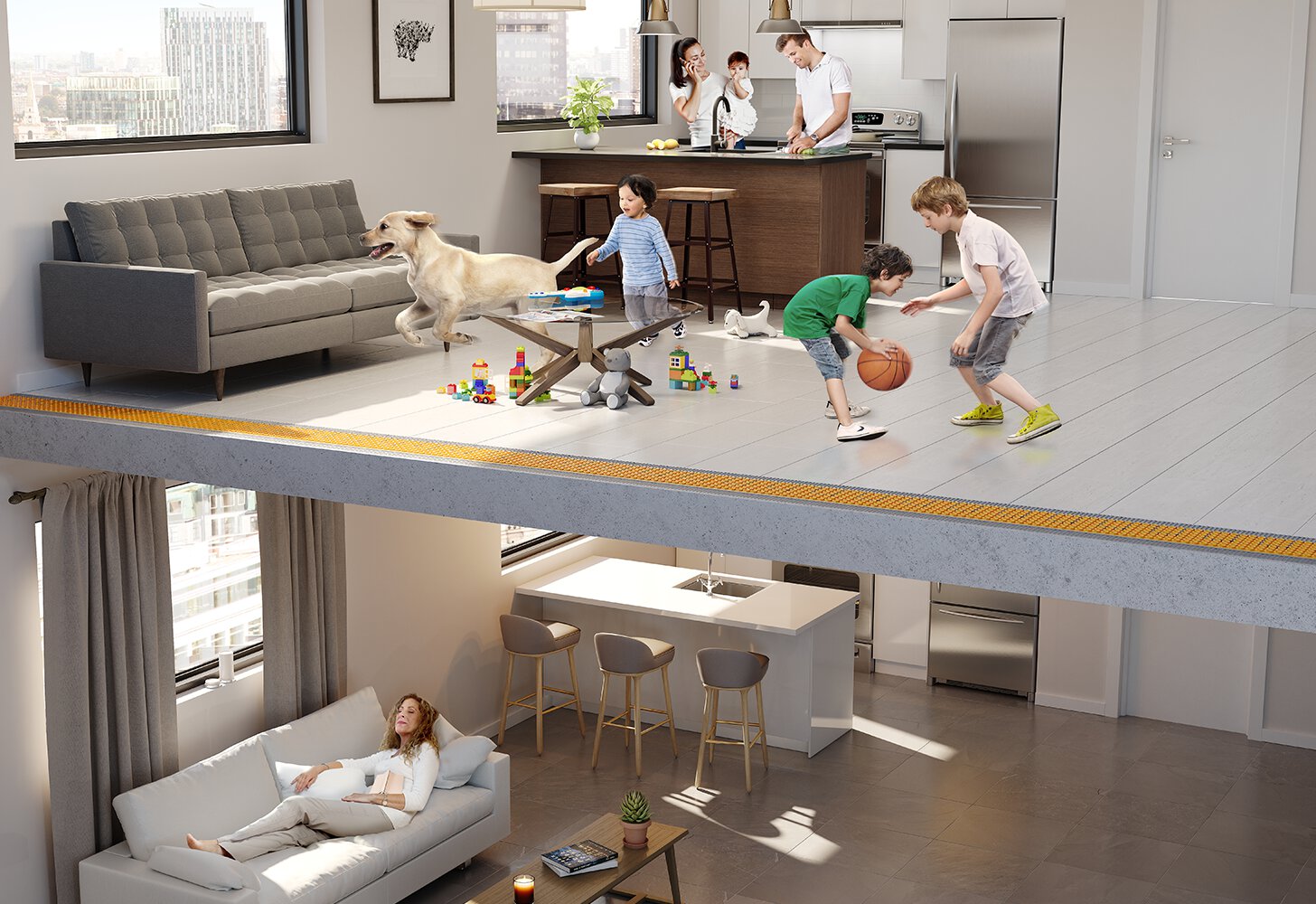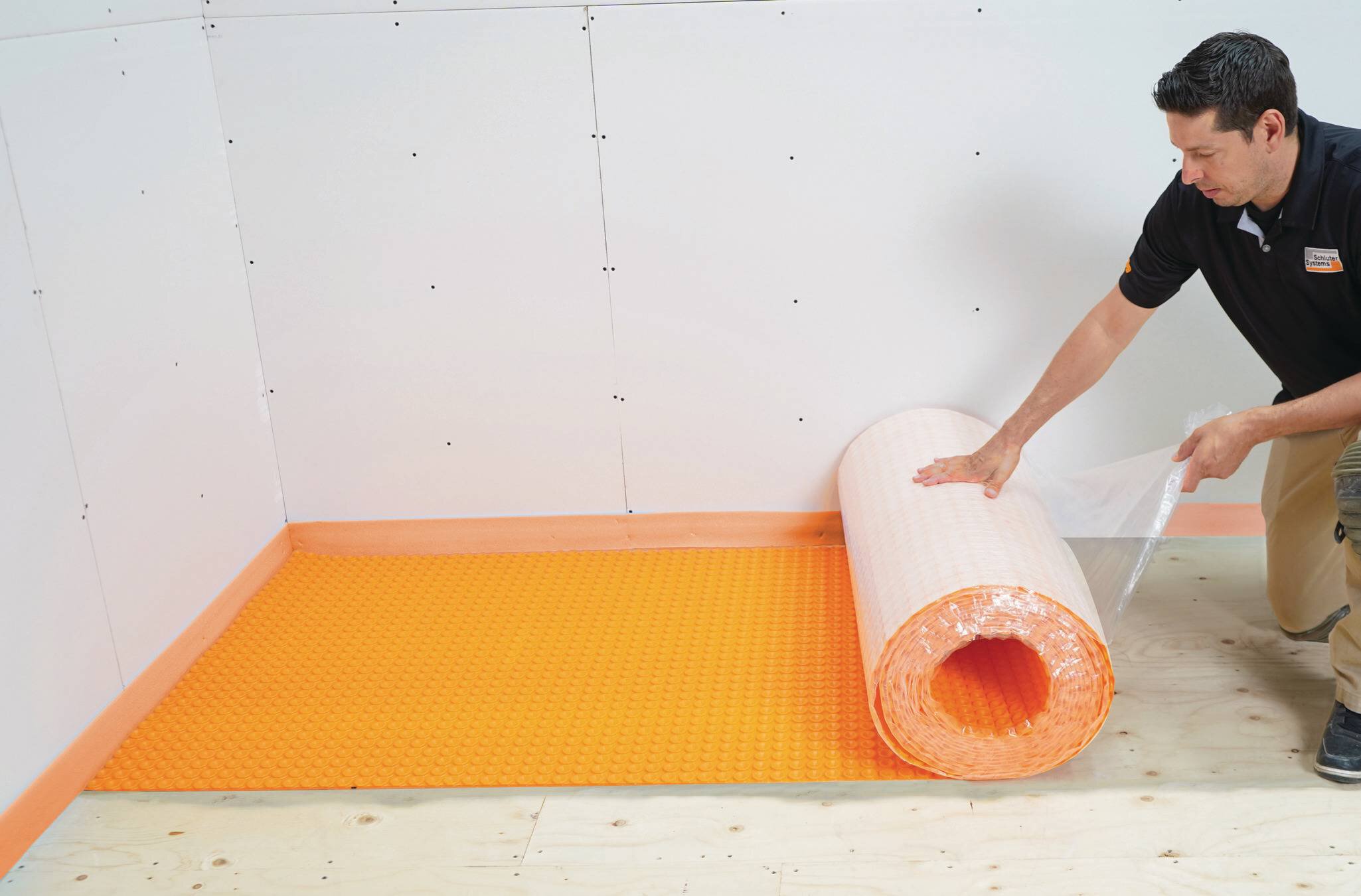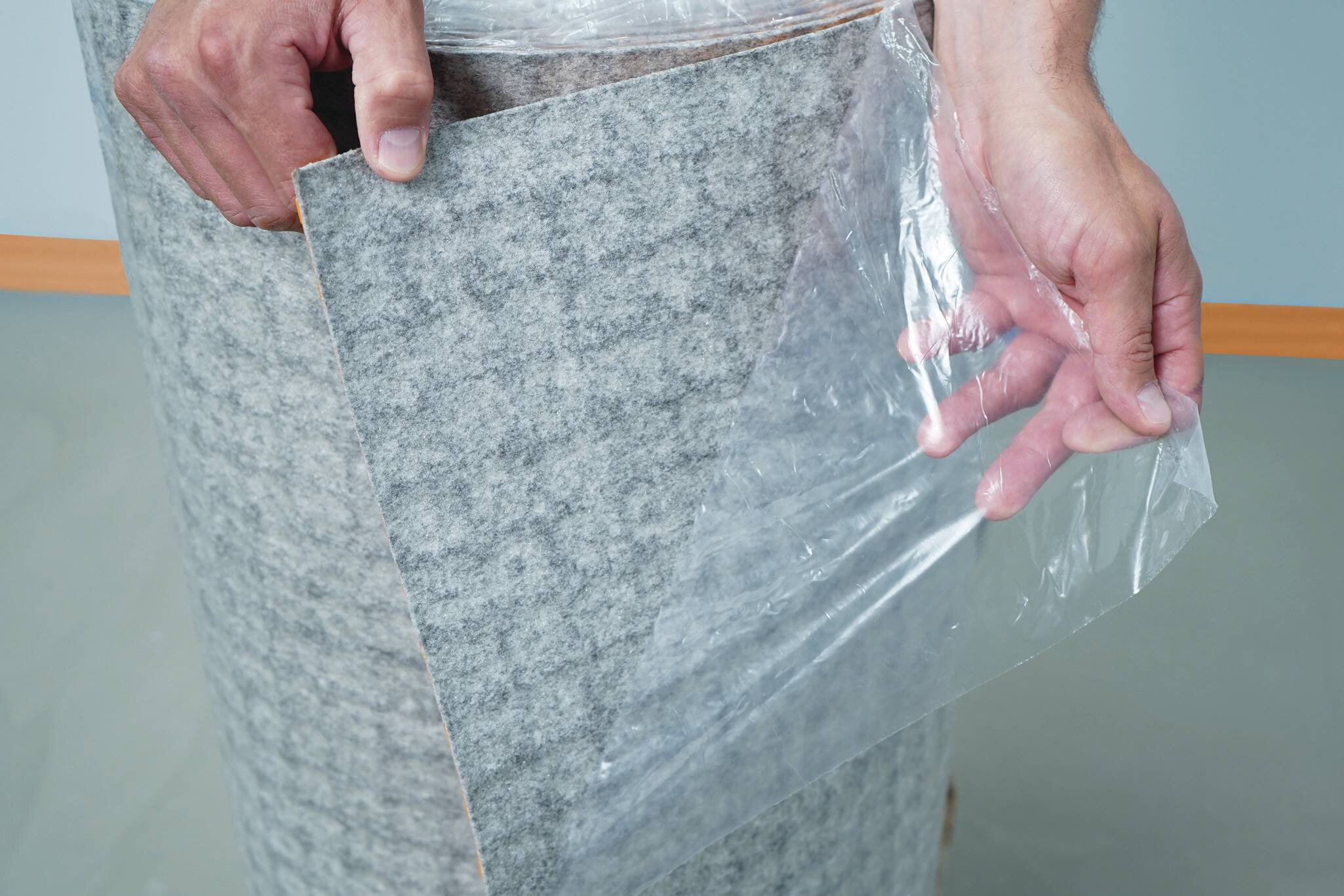
Understanding Peel and Stick Uncoupling Membranes for Heated Floors
Peel and stick (PS) uncoupling membranes have hit the market and are gaining popularity. This is the new mess-free way to install an uncoupling membrane under tile, since there is no thin-set mortar required to install these membranes to plywood, OSB, gypsum, or concrete substrates – no mess, no stress.
Peel and stick membranes feature a pressure-sensitive adhesive (PSA) backing, which is a type of adhesive that allows the underlayment to be repositioned during installation but gains strength each time pressure is applied during and after installation. Like the thin-set mortar versions, peel and stick uncoupling membranes are generally intended for clean, dry, interior installations. In this blog, we will explore some of the features and benefits of peel and stick membranes that explain why these have become popular choices for heated floors.

Main Functions
While the thin-set mortar versions of these uncoupling membranes are still an available option and popular among tile installers, peel and stick membranes are becoming a go-to option to minimize installation time while maintaining the same core functions as the thin-set versions. The core functions include uncoupling, waterproofing, vapor management, and support/load distribution. As with the thin-set versions, heating cables can also be inserted into the PS membranes to add floor warming properties. This is a major benefit in areas with unpredictable climates. When the heated floor is in operation, it can increase the room temperature as well. This creates the potential to cut down heating costs during the cold, winter months. Another benefit of the PS membrane is that the performance is unaffected by the introduction of heating cables into the installation, insofar as the glue is not negatively affected by the heat.



Quiet Please!
Sound control is highly sought after in condos and other dwellings where there are multiple families. Schluter®-DITRA-HEAT-DUO-PS contains a thicker fleece layer to reduce sound transmission and increase the delta impact insulation class (IIC) rating, which is a number rating of how well the floor of a building reduces impact sounds, such as footsteps. The test to determine a membrane’s IIC is performed using a tapping machine specified in American Society for Testing and Materials (ASTM) method, E492. The larger the number, the more sound reduction the membrane provides when installed. DITRA-HEAT-DUO-PS combines the original four basic functions of the thin-set versions, while including ease of heating cable installation and sound control in a single step!
The uncoupling properties of the PS membranes indicate that the membrane, when installed under tile, absorbs movement from the substrate beneath to help prevent tiles from cracking or becoming loose. The peel and stick membranes are composed of polypropylene, which protects the substrate from moisture penetration, adding to its waterproofing abilities. The free space underneath each of the PS membranes provides an access route for excess moisture and vapor to escape from the substrate, instead of penetrating the floor covering above. When the surface covering over the PS membrane is installed with thin-set mortar, the studs on the upside of the membrane are filled with mortar, which makes the studs non-collapsible and contributes to high support/load distribution.



Easy Installation
Along with the benefits of the peel-and-stick membrane’s core functions mentioned above, the ease of installation presents a big draw to the product. All that must be done for a proper installation is to peel off the release film from the fleece side of the membrane and adhere to the substrate. Until the adhesive side of the membrane is fully adhered by using force to push the membrane onto the substrate, it can be moved and replaced as necessary. The adhesion provided by the pressure-sensitive adhesives used for the PS membranes increases over time, and traffic on the surface of the tile installation further improves the bond. No thin-set mortar required, thus, saving time and effort. Who doesn’t want a faster installation time? The quicker an installer can complete a flooring installation, the more desirable the installer, right? With PS, the tile installer can install the underlayment in potentially half the time, allowing more jobs to be completed in a shorter time frame.
One important note is that the substrate must be clean, even, and load bearing, according to the DITRA-HEAT Handbook. An appropriate primer can also be used with these membranes over any difficult-to-bond-to substrate or for increased adhesion, when required. A list of approved substrates can be found in the DITRA-HEAT Technical Data Sheet or Installation Handbook.



Wet Areas
Although peel and stick membranes are primarily installed in dry, interior environments, they can also be used in showers. There are a few things to consider before installing them in interior environments exposed to moisture. While the thin-set mortar versions of the membranes are approved for use in wet areas as they comply with ANSI A118.10, the PS versions do not comply with this standard. In these cases, PS membranes can be covered with the Schluter®-KERDI waterproofing membrane, in conjunction with the necessary waterproofing membrane components, to make the installation waterproof.
Peel, Stick, Go!
Peel and stick uncoupling membranes are widely available, successfully perform multiple core functions, and are beneficial to almost any tile or natural stone installation. These membranes have many positive attributes when a tile or stone application is desired, especially within dry, interior environments, where uncoupling properties may be helpful or necessary. Because thin-set mortar is not required to adhere the peel and stick membranes to wood or concrete substrates, the installation time is greatly decreased. It’s really peel, stick, and go! The PS membranes feature a pressure-sensitive adhesive backing under the fleece layer that uniquely increases in adhesion based on the amount of traffic applied over the application.
To find out if peel and stick membranes would benefit your installation, refer to Schluter’s DITRA-HEAT Technical Data Sheet or reach out to your local Schluter representative.


